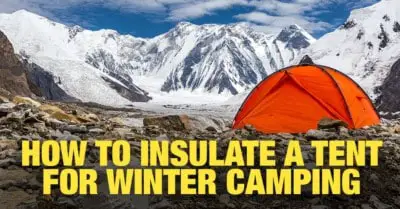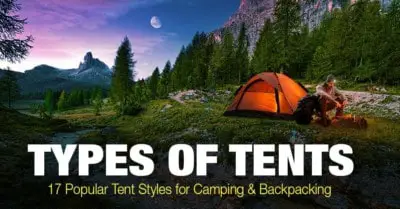Learning how to stay warm in a tent matters because if you have never awoken with your teeth chattering in a tent, then you’ve never gone tent camping. Many people complain about getting shivers while out camping. You wake up in the middle of the night and feel frozen by the cold temperatures outside.
How do you stay warm in a tent when camping? Check the EN temperature rating of your sleeping bag before buying. The EN temperature rating helps you find one to meet your needs. Also, choose a protected camping area, wear layers of clothing, bring hot water bottles to bed, and bring a thermos.
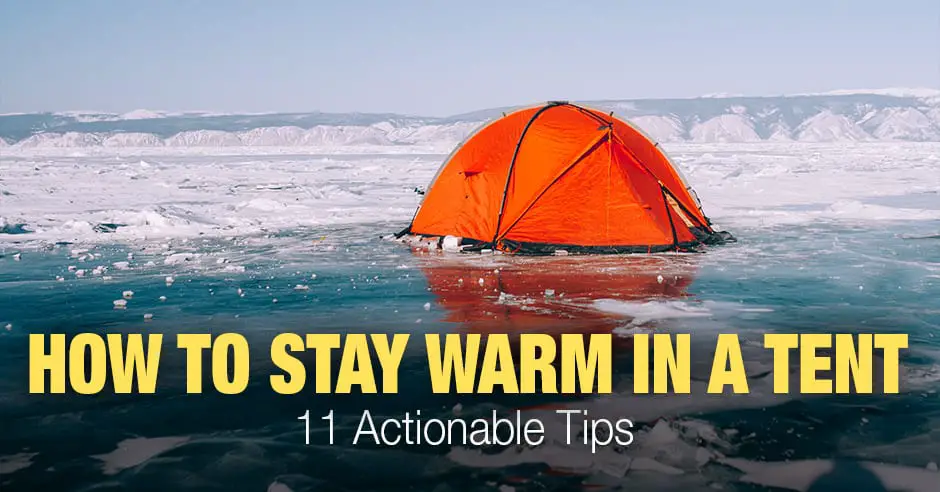
If you’d like to learn how to stay warm in a tent, this in-depth guide will ensure that you know enough about how to stay warm in a tent.
How to Stay Warm in a Tent without Electricity
As answered above, you have a few things you can do to keep warm. We will cover the most important first, which revolves around tips with the sleeping bag. This ensures that you get the most out of a sleeping bag. If you buy this product without knowledge, you may buy a good one, but you have an equal chance of buying one that won’t measure up.
1. Check You Sleeping Bag EN Temperature Rating
No matter what the temperature rating, understanding how the EN temperature rating works hands you a general measurement. It doesn’t lend itself to complete accuracy, but you can use the standards to find a bag you prefer.
EN 13537, the standard measurement for the temperatures of sleeping bags, is considered the most accurate, using independent labs to certify the rating.
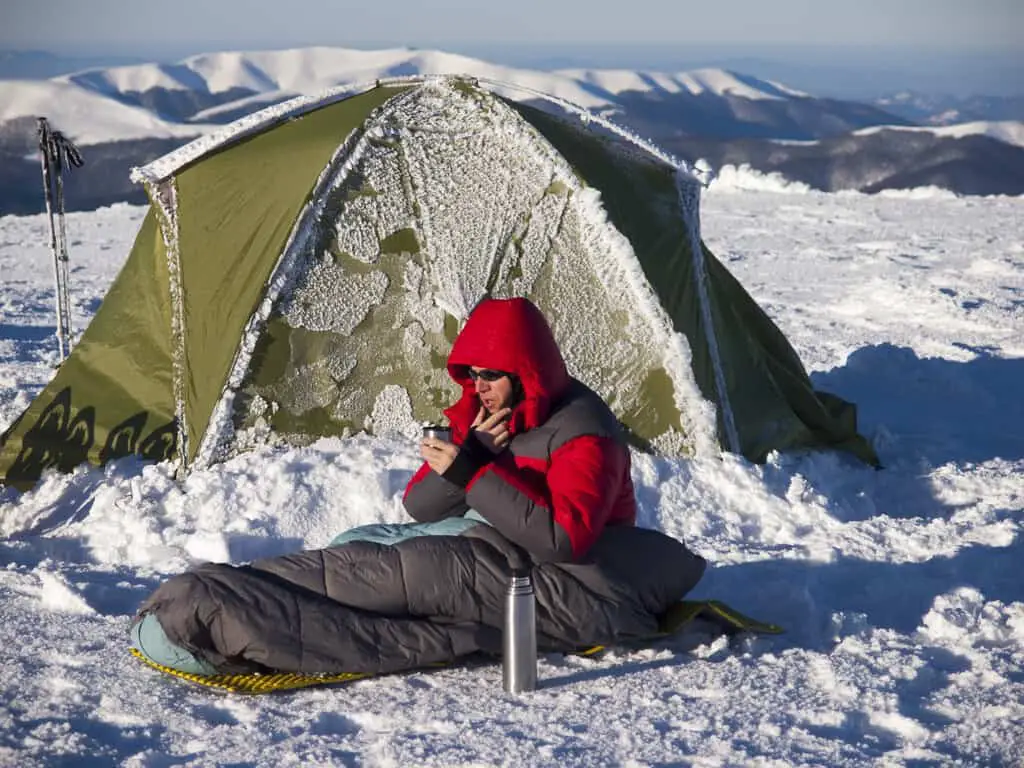
2. Be Aware of the Difference between Male and Female Sleeping Bags
Because men usually put out more body heat, female sleeping bags will have more padding and insulation. They especially insulate the feet and the torso area of female sleeping bags. Even as a male, if you want to stay warmer, choose the female sleeping bag. Women sleeping bags make for a tighter fit to prevent excess airflow.
You can buy unisex sleeping bags, but like the male sleeping bag, it doesn’t have as much padding and insulation.
3. Wear a Hat in Your Sleeping Bag
In one estimate, researchers learned how people lose between seven to 10 percent of their body heat through their heads. Having a warm hat on like a knit cap ensures that you don’t lose as much heat. Some people pull their head into the sleeping bag, but you can’t breathe well with your head inside the sleeping bag. Wearing a balaclava mask might jostle up some laughs from your ignorant buddies, but in the end, your own laugh will be loudest as they wake up teeth chattering in the middle of the night.
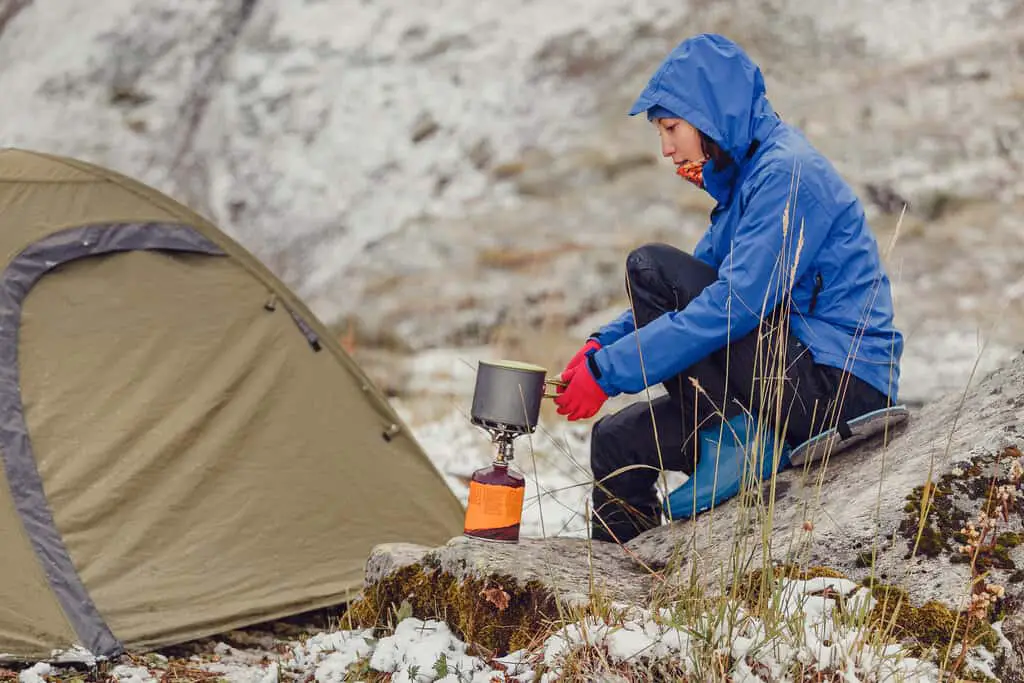
4. Buy the Right Tent
We put a lot of emphasis on the sleeping bag, but the tent you buy also makes a difference.
You will see a label that either calls the tent a 3-season or a 4-season tent. Buy the 4-season tent if you can. The 4-season label means that the tent can handle all seasons, including winter. That doesn’t mean that you will be warm and toasty in the winter in this tent, but you will feel much warmer than a 3-season tent because it can hold out against the elements better.
Camping in extremely cold weather, you may want to buy a tent designed for extremely cold weather. Also, consider the material. Heavier tent materials like thick canvas will typically keep the heat in better.
5. Use a Heater in Your Tent
If you buy a tent-safe heater, even then, be careful. However, you must check to see that you have bought a tent-safe heater and check that the tent is made from heavy materials like polycotton or canvas. You will also want an opening called a flue pipe, which acts as a chimney.
Even with a tent-safe heater, don’t run it all night. You have two dangerous problems with heaters and tents. First, propane heaters and any fuel-burning heaters put out a lot of carbon monoxide, which could kill you from carbon monoxide poisoning.
The other more dangerous problem comes from flammability. Tents, even the ones labeled as non-flammable, will burn. You don’t want to be trapped in a tent as a fire kicks off. Most tents are made from nylon or polyester. While they might not ignite at first, once nylon and polyester start burning, severe melting and dripping occur. Trapped in a burning tent with only one or two exits, can be a dangerous scenario.
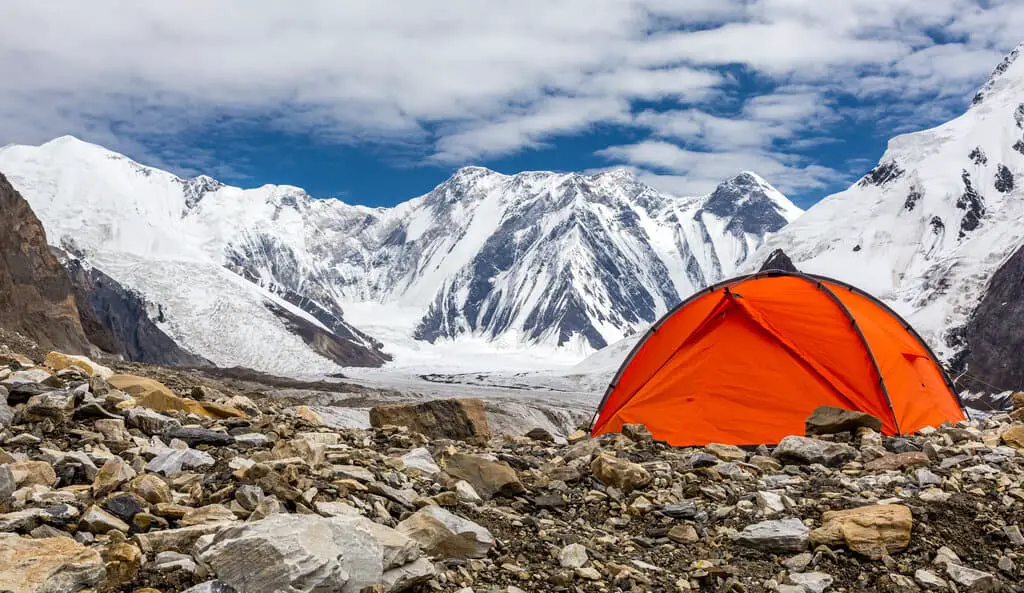
6. Dress in Layers
We say this but do it wisely. Dress according to the weather. Don’t dress in so many layers that you wake up sweaty. Eventually, the warm sweat turns cold and damp. You want to wear articles of clothing that you can remove without too much effort. Keep extra layers nearby to put on if needed.
When you go to sleep, put on warm and dry socks. Beware of socks that have any dampness because even if warm at the time, as the temperatures drop, the dampness becomes cold. Temperatures drop between two to seven degrees at night, with the time before sunrise being the coldest of the day. You may buy some hand warmers before bed and have them nearby. However, don’t add them to your sleeping bag because you could burn yourself or the sleeping bag.
7. Air Beds and Warmth
You see many tent campers who bring along an air bed to stay off the ground. Air beds lose a lot of heat through the ground, which makes the air mattress cold. You might try preheating the air bed with a warm water bottle for 15 to 20 minutes, but even this may not do the trick. Worse, cold temperatures can cause the mattress to deflate, which puts you closer to the ground. An air bed might do fine in moderate temperatures, but you’d do better with a sleeping bag.
First invented in 1876 by Pryce Pryce-Jones, sleeping bags add cushions between you and the hard ground. Using regular blankets won’t add as much cushion, and you will likely wake up stiff. Sleeping bags may not feel as comfy as an air bed, but they beat regular blankets without cushions.
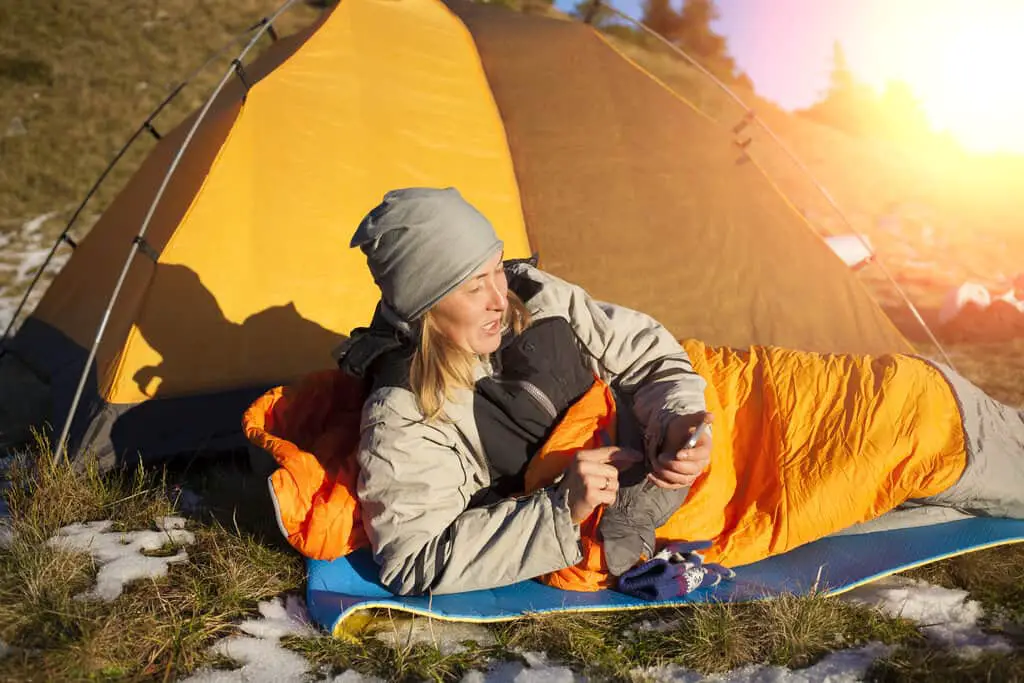
8. Add Mylar Blankets
Perhaps one of the more fun things on this list, Mylar Blankets, cost little, and they can reflect the heat back to you. You could pull the NASA-developed blanket over yourself or duct tape it to the ceiling of your tent. The heat in the tent from your body and even a tent-safe heater will reflect the heat back. During the day, you can use them to keep your tent cool by reflecting the sun’s ultraviolet rays and use them for warmth at night.
9. Protected Camping Areas
Where you choose to camp matters as much as the sleeping bag or tent you choose. Being out in an open area with a lot of wind can lead to you feeling colder.
Here’s what to look for in a protected camping area:
- Lots of trees around
- Parking area to strategically park the car as a windbreak
- Dry zone away from dampness
10. Bring Hot Water Bottles
You can use hot water bottles in your sleeping bag to keep warm. Just be sure of the quality of construction because you don’t want it to burst into the bag with you. In many cases, this won’t act as a long-term solution, but it can keep you warmer before bed. Take the bottles out after your sleeping bag has absorbed the heat.
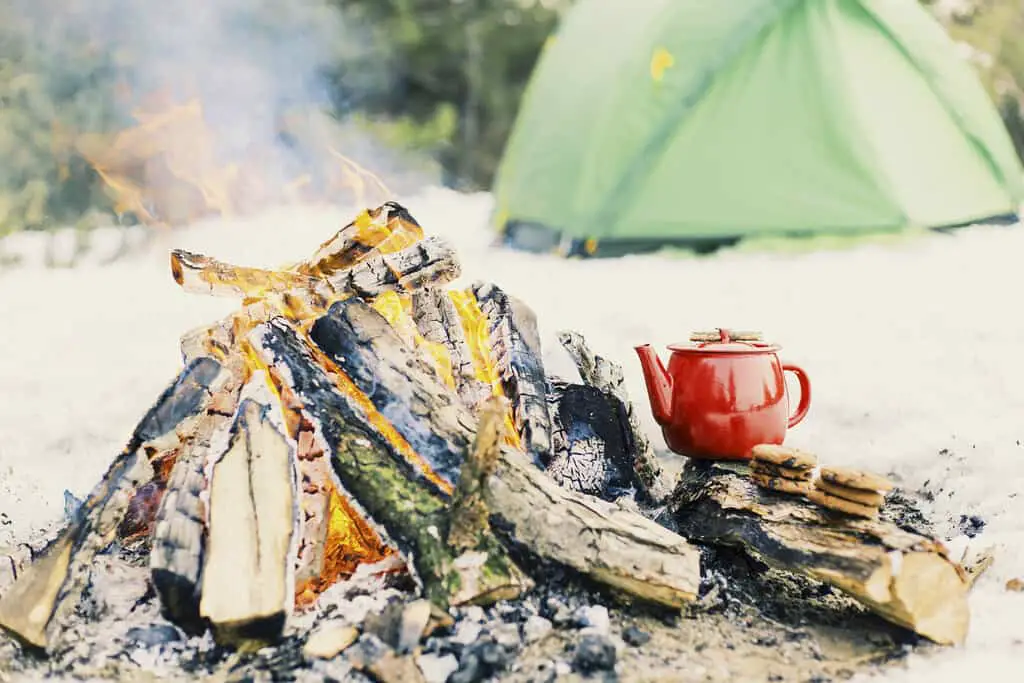
11. Bring Along a Thermos
Pour hot chocolate into the thermos. If you wake up cold, open the thermos to take a swig. A cheaper thermos will keep liquids warm for between six to eight hours. More expensive models can keep liquids warm for between 12 to 24 hours. The thermos traps the heat inside through a vacuum-sealed container. When you’re looking at how to keep a tent warm, you have to use every resource at your disposal.
How to Stay Warm in a Tent | Conclusion
Hopefully, this sheds some light on how to stay warm in a tent. While tent camping exposes you to the elements more than campers, they cost less, and you feel closer to nature. Many people love it so much that even despite braving the elements like cold weather, they wouldn’t camp any other way.




